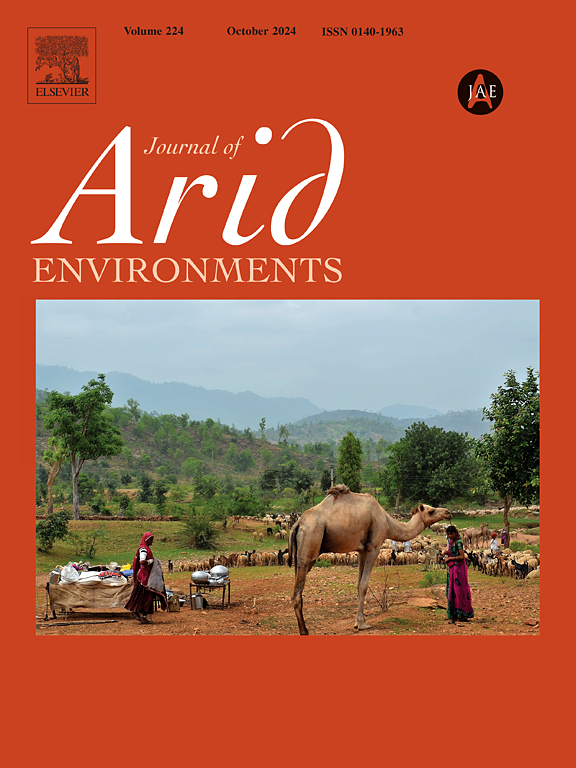棕榈(Syagrus coronata, Mart.)的作用Becc.)在支持传统Caatinga农业系统中附生植物的生物多样性
IF 2.5
3区 环境科学与生态学
Q2 ECOLOGY
引用次数: 0
摘要
附生植物在生态系统功能中起着至关重要的作用,但极易受到栖息地丧失的影响,特别是在像Caatinga这样的旱地生物群落中。在农业景观中,残树可以作为重要的避难所,在土地利用变化的情况下保持生物多样性。本研究评价了在卡廷加放牧区内,棕榈(Syagrus coronata)在维持附生植物多样性中的作用。我们调查了巴西阿拉戈斯3个地点的244棵棕榈树,利用广义线性模型评估了棕榈树性状与附生植物丰富度之间的关系。结果表明,218株(91%)高于2 m的棕榈树在其树冠上有附生植物。附生植物丰富度高(S = 28),不受棕榈径和叶数的影响,但随着株高的增加而降低。β -多样性分配揭示了高的物种更替,这主要是由光合植物性状的变化所驱动的。功能群分析表明,中等高度的棕榈树以真附生植物为主,而较高的棕榈树以多面手植物为主。这些发现强调了在人类化景观中,残余冠状棕榈对附生植物保护的生态重要性。保护这些棕榈树可以加强栖息地的连通性,减轻生物多样性的丧失,并支持卡廷加的野生动物友好型农业模式。本文章由计算机程序翻译,如有差异,请以英文原文为准。
The role of the ouricuri palm (Syagrus coronata (Mart.) Becc.) in supporting epiphyte biodiversity in traditional Caatinga agricultural systems
Epiphytes play a crucial role in ecosystem functioning but are highly vulnerable to habitat loss, particularly in dryland biomes like the Caatinga. In agricultural landscapes, remnant trees can function as important refuges, maintaining biodiversity despite land-use changes. This study evaluates the role of the Ouricuri palm (Syagrus coronata) in sustaining epiphyte diversity within grazing areas of the Caatinga. We surveyed 244 palms across three sites in Alagoas, Brazil, assessing the relationships between palm traits and epiphyte richness using generalized linear models. Our results revealed that 218 (91 %) of the palms taller than 2 m hosted epiphyte species in their crowns. Epiphyte richness was high (S = 28) and not influenced by palm diameter or leaf number but declined with increasing plant height. Beta diversity partitioning revealed high species turnover, primarily driven by variations in phorophyte traits. Functional group analysis showed that true epiphytes were favored by intermediate-height palms, while generalist species dominated on taller ones. These findings highlight the ecological importance of remnant S. coronata palms for epiphyte conservation in anthropized landscapes. Preserving these palms can enhance habitat connectivity, mitigate biodiversity loss, and support a wildlife-friendly agricultural model in the Caatinga.
求助全文
通过发布文献求助,成功后即可免费获取论文全文。
去求助
来源期刊

Journal of Arid Environments
环境科学-环境科学
CiteScore
5.70
自引率
3.70%
发文量
144
审稿时长
55 days
期刊介绍:
The Journal of Arid Environments is an international journal publishing original scientific and technical research articles on physical, biological and cultural aspects of arid, semi-arid, and desert environments. As a forum of multi-disciplinary and interdisciplinary dialogue it addresses research on all aspects of arid environments and their past, present and future use.
 求助内容:
求助内容: 应助结果提醒方式:
应助结果提醒方式:


